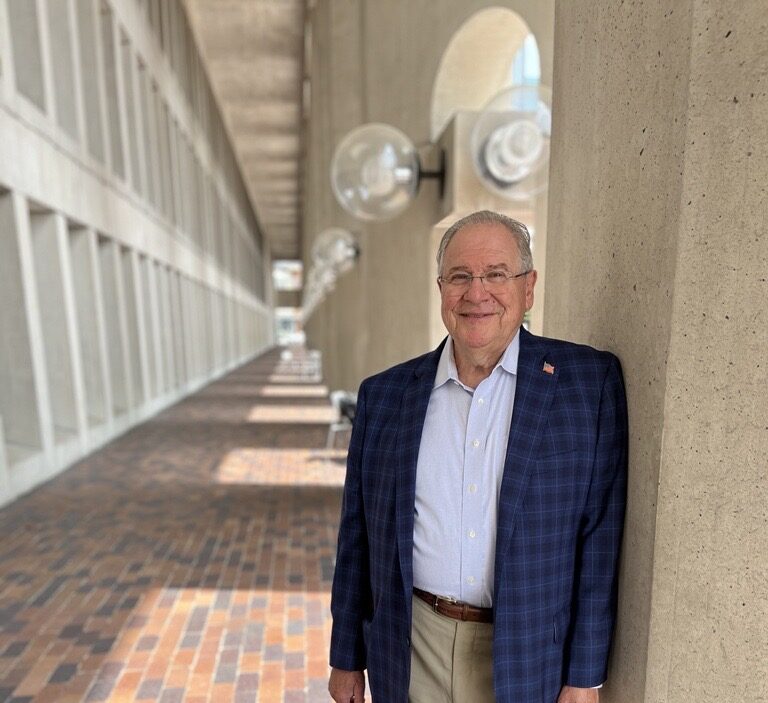Degree keeps pace as communications trends constantly evolve
Benchmark study documents prominence of social media and measurement
Twitter and Facebook, once seen as fleeting trends, quickly staked their claim as important tools that companies and organizations would be foolish not to adopt if they want to continue reaching their intended audiences. As forms of communication evolve, especially social media, faculty members teaching the next crop of communications professionals need to keep pace – and that needs to be reflected in their courses and curriculum. To make sure his program is up-to-date with industry standards, Dr. Carl Zangerl, Academic Director, Master of Science in Corporate and Organizational Communication at Northeastern University’s College of Professional Studies (CPS), reviews studies like the Communications and Public Relations Generally Accepted Practices Studies (GAP), for insight on where the industry stands, and where it is heading.
“I am constantly evaluating our curriculum to keep it fresh, providing our students with the tools, skills and perspectives they need to advance in their career,” said Zangerl. “Our instructors are professional communicators who know how to keep their courses on pace with industry trends, preparing students effectively through our curriculum.”
The GAP Studies, created by the University of Southern California Annenberg School for Communication and Journalism and its partners, analyze communications trends among top communications professionals in order to provide those in the industry with data they can use to better manage their public relations and communications functions, point out trends, and identify best practices. The most recent GAP study, GAP VII, is the largest and most comprehensive study to-date of senior-level public relations/communications practitioners.
“When you break down the value of the study, it’s basically taking the pulse of the communications profession,” said Zangerl. “By surveying top communications professionals, it’s relaying the skills and capabilities that communicators need to possess in order to have an impact on their organization.”
How does the curriculum within the Master’s in Corporate and Organizational Communication degree program measure up to some of the key findings in the GAP VII study?
Social Media
One of the main findings in the GAP VII study is the move from “old school” to “new school” approaches, such as the shift from the belief that social media is not pervasive, to establishing a long-term strategic direction for social media within an organization. According to the study, companies that embrace the “new school” best practices are more likely to be associated with success variables. The Master’s in Corporate and Organizational Communication degree program has adopted a “new school” approach by offering a concentration in Social Media and Online Communities. According to Zangerl, course enrollments have more than doubled since the concentration was launched in fall 2011. Courses examine topics that are critical to organizational communication in the digital era, with course offerings such as Social Media and Brand Strategy Implementation and Digital Era Skills: Platforms, Tools, and Techniques.
Measurement
Another key finding in the study was the move from an “old school” approach of measuring media outputs, to the “new school” approach of measuring media outcomes, focusing on analytics and other measurment tools in order to evaluate the effectiveness of a communications strategy. The Organizational Communication Assessment course, recommended as a last course in the master’s program, trains students to analyze data and deploy measurement tools, given that skilled communicators must be able to assess the effectiveness of their communications strategies and tactics.
“The industry is also seeing more adoption of measurement among social media channels so this was another important reason for us to include this as a required course within the program,” Zangerl said.
“With a curriculum that keeps pace with the industry, and faculty with current real-world experience, I believe our program reflects the dynamic changes going on in the industry and prepares our students for a constantly changing, but exciting career in communications.”
To make sure his program is up-to-date with industry standards, Dr. Carl Zangerl, Academic Director, Master of Science in Corporate and Organizational Communication at Northeastern University’s College of Professional Studies (CPS), reviews studies like the Communications and Public Relations Generally Accepted Practices Studies (GAP), for insight on where the industry stands, and where it is heading.
“I am constantly evaluating our curriculum to keep it fresh, providing our students with the tools, skills and perspectives they need to advance in their career,” said Zangerl. “Our instructors are professional communicators who know how to keep their courses on pace with industry trends, preparing students effectively through our curriculum.”
The GAP Studies, created by the University of Southern California Annenberg School for Communication and Journalism and its partners, analyze communications trends among top communications professionals in order to provide those in the industry with data they can use to better manage their public relations and communications functions, point out trends, and identify best practices. The most recent GAP study, GAP VII, is the largest and most comprehensive study to-date of senior-level public relations/communications practitioners.
“When you break down the value of the study, it’s basically taking the pulse of the communications profession,” said Zangerl. “By surveying top communications professionals, it’s relaying the skills and capabilities that communicators need to possess in order to have an impact on their organization.”
How does the curriculum within the Master’s in Corporate and Organizational Communication degree program measure up to some of the key findings in the GAP VII study?
Social Media
One of the main findings in the GAP VII study is the move from “old school” to “new school” approaches, such as the shift from the belief that social media is not pervasive, to establishing a long-term strategic direction for social media within an organization. According to the study, companies that embrace the “new school” best practices are more likely to be associated with success variables. The Master’s in Corporate and Organizational Communication degree program has adopted a “new school” approach by offering a concentration in Social Media and Online Communities. According to Zangerl, course enrollments have more than doubled since the concentration was launched in fall 2011. Courses examine topics that are critical to organizational communication in the digital era, with course offerings such as Social Media and Brand Strategy Implementation and Digital Era Skills: Platforms, Tools, and Techniques.
Measurement
Another key finding in the study was the move from an “old school” approach of measuring media outputs, to the “new school” approach of measuring media outcomes, focusing on analytics and other measurment tools in order to evaluate the effectiveness of a communications strategy. The Organizational Communication Assessment course, recommended as a last course in the master’s program, trains students to analyze data and deploy measurement tools, given that skilled communicators must be able to assess the effectiveness of their communications strategies and tactics.
“The industry is also seeing more adoption of measurement among social media channels so this was another important reason for us to include this as a required course within the program,” Zangerl said.
“With a curriculum that keeps pace with the industry, and faculty with current real-world experience, I believe our program reflects the dynamic changes going on in the industry and prepares our students for a constantly changing, but exciting career in communications.”
Northeastern University’s College of Professional Studies (CPS) is committed to providing career-focused educational programs that are designed to accommodate the complex lives of motivated learners. Offered in a variety of innovative formats, CPS courses are taught by accomplished scholars and practitioners who have real-world experience. The result is an educational experience founded on proven scholarship, strengthened with practical application, and sustained by academic excellence. Founded in 1898, Northeastern is a comprehensive, global research university. The university offers more than 80 undergraduate majors and more than 165 graduate programs, ranging from professional master’s degrees to interdisciplinary PhD programs. Northeastern’s research enterprise is aligned with three national imperatives: health, security and sustainability. Northeastern students participate in co-op and other forms of experiential learning in 90 countries on all seven continents.




